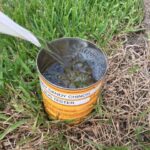While I spend quite a bit of time talking about how to water using spray and rotary heads, we’re seeing more and more drip irrigation systems being installed and I’ve begun getting questions about where they should be used and how long they should be run.
Drip systems put water exactly where you want it with virtually no loss to evaporation which is why for the past few years cities have encouraged and sometimes required them.
Here are a few tips and tricks regarding drip systems:
The best use of drip lines is in narrow bed areas that spray heads can’t cover well, such as around swimming pools or very narrow turf areas. Because they put out water very slowly, they are also great to use on slopes.
Drip irrigation is designed to maintain a consistent amount of water in the soil by watering a few minutes daily. Because of the low amount of water it puts out, drip lines are not as effective when they are run once or twice per week – if the soil dries out, it takes a long time for drip lines to put out enough water to catch back up.
Our slab foundations need a consistent amount of water at all times which makes drip lines ideal for watering the foundation.
During the summer, in sunny areas, drip zones should be run somewhere between 5 to 10 minutes per day or roughly 30 minutes to an hour per week per zone. Why the broad range? There are a few different types of drip hoses that are installed in this area and each of them drips (emits) at a different rate so you’ll need to watch your plants to see if they are happy with the amount of water they are getting.
Drip lines are meant to be covered with mulch or buried. The weakest part of drip lines are all of the connections which are held together with barbs that will sometimes pop loose. If the drip line is left in the sun, the heat on the hose will make it soft and the connections will come apart much more often.
Because the lines are shallow, they tend to get damaged more often then other sprinkler lines. They are prime targets for aerators, people weeding your beds or even squirrels that love to chew on anything so it’s a good idea to check your drip zones several times throughout the year, just to be sure you haven’t developed a leak.
During droughts, most cities exempt drip lines from their water restrictions so if your landscape beds are on drip zones, you can water those daily and focus in on the turf areas on the permitted days (that became important a few years ago to those of us who could only water every two weeks.)
If you have any lawn or landscape questions give us a call at 972.495.6990 or email [email protected].



